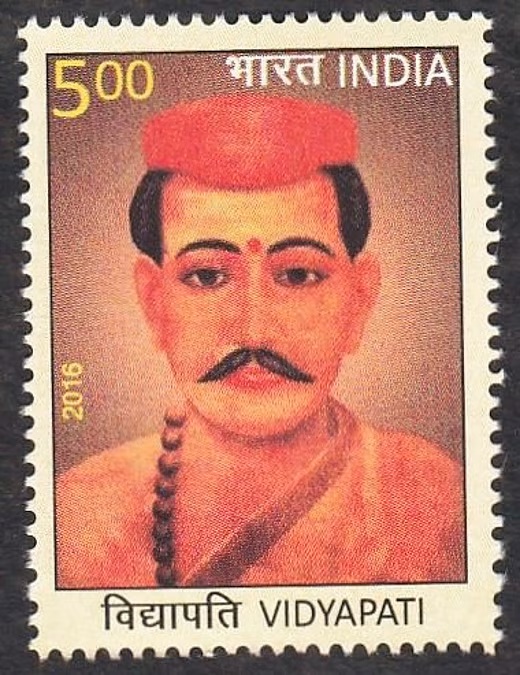Why in the News?
This newscard is an excerpt from the original article published in Down To Earth.

About Vidyapati Thakur (1352 – 1448):
- Identity and Origin: Celebrated Maithili poet, philosopher, and scholar from Mithila (northern Bihar), active under the Oiniwar dynasty during the 14th–15th centuries.
- Languages Used: Composed in Maithili, Sanskrit, and Avahatta, blending classical and vernacular idioms into a unified literary tradition.
- Cultural Role: Revered as the “Father of Maithili Literature”, he elevated a regional tongue to a medium of devotion and philosophy, breaking Sanskrit monopoly.
- Historical Setting: Lived amid the Bhakti movement’s eastern rise, when devotional currents merged with courtly Sanskrit and folk traditions.
Major Contributions:
- Bhakti Poetry (Padavali): Authored lyrical songs of Radha–Krishna love, giving women voice and agency through emotive Maithili verse.
- Linguistic Innovation: Asserted “Desil bayana sab jan mittha” – the sweetness of native speech – thereby legitimising vernacular expression against Sanskrit elitism.
- Ethical and Philosophical Thought: In Purusha-Pariksha, upheld knowledge and humility as the marks of true nobility, challenging caste and wealth hierarchies.
- Ecological Vision: Bhu-Parikramanam portrayed rivers, groves, winds as moral presences, anticipating environmental ethics centuries before modern discourse.
- Devotional Hymns: His Ganga Stuti personified the river as divine mother and moral teacher, uniting spirituality with ecological reverence.
- Administrative Scholarship: Likhanavali functioned as a manual of governance and record-keeping, showing mastery beyond poetics.
- Regional Influence: His idiom spread to Bengal, Odisha, and Assam, inspiring the Brajabuli tradition and Chaitanya-era Vaishnava poets.
- Culture–Nature Synthesis: Saw land as sacred, trees as temples, and rivers as teachers, merging ecology with devotion and ethics.
- Enduring Legacy: A bridge between Sanskrit classic and regional modernity, Vidyapati’s ideals of love, humility, and environmental ethic continue to define Mithila’s cultural identity.
| [UPSC 2019] Consider the following statements:
1. Saint Nimbarka was a contemporary of Akbar. 2. Saint Kabir was greatly influenced by Shaikh Ahmad Sirhindi. Which of the statements given above is/are correct? Options: (a) 1 only (b) 2 only (c) Both 1 and 2 (d) Neither 1 nor 2* |
Get an IAS/IPS ranker as your 1: 1 personal mentor for UPSC 2024

